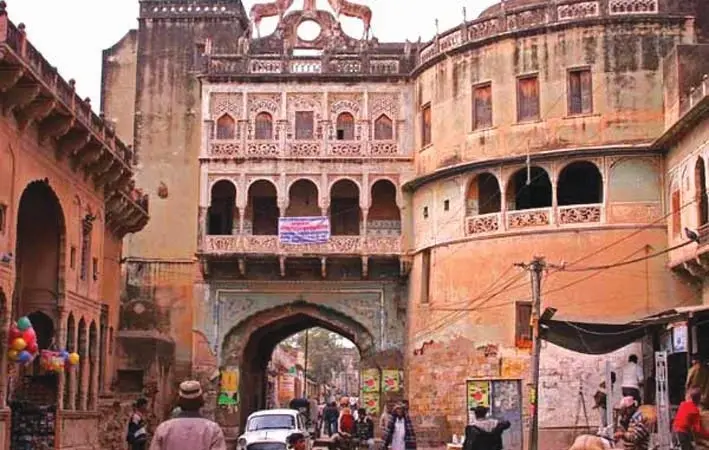Mandawa: A desert jewel
Known for its Shekhawati paintings, Mandawa has much more to offer its visitor, realised rakesh kumar
When I first heard about the place, Mandawa, I mistakenly related it to Mandwa of Agneepath fame. It was our driver, who was taking us there, who quickly corrected me and said, "It is Mandawa not Mandwa."
Founded in the mid-18th century, Mandawa in Jhunjhuni district of Rajasthan was once home to rich merchant families. These wealthy merchants had constructed enormous havelis that were grandly decorated. While many of these havelis are now in a sorry state, the wall paintings in them are still intact. The beautiful fresco wall paintings that decorate all the havelis is the hallmark of the Shkehawati region, under which Mandawa too falls.
Just 260 km away from Delhi, it took us seven hours to reach there late at night. At first sight, Mandawa appeared to be a quaint, almost uninhabited town. This impression quickly disappeared as we entered the Sara Vilas Hotel, where we were accorded a royal welcome.
Magical start
The first day greeted us with several surprises, the foremost being the hotel itself. Set in idyllic, beautifully landscaped gardens, housing 62 vilas and three suites, the hotel has spectacular views with large terraces. It was designed to recreate the regal ambience of a bygone era, promising to be a perfect getaway.
At breakfast, the hotel manager informed us of the many places to explore in the small town. He recommended Mandawa fort, royal havelis, fresco paintings, temples, wild life, camel ride, markets and much more. He also informed us that a number of Bollywood films, including Aamir Khan starrer PK, Jab We Met with Shahid Kapoor and Kareena, Shahrukh starrer Paheli and Sanjay Dutt's Zed Plus were shot in Mandawa.
This information increased our expectations and we set out to explore Mandawa. Acting as our guide, our driver told us that Mandawa is popularly known as the open art gallery of Rajasthan due to its murals and frescoes depicting tales from mythology, legends and contemporary life. The havelis also attracted a large number of foreign tourists, who were minutely examining the paintings.
We first visited the Gulab Rai Ladia Haveli, which was closed from all sides and had one large main gate. Like other havelis, there were two courtyards ~ the outer one meant for men and an inner one in the women's quarters. Next on the list was Hanuman Parsad Goenka Haveli. Its architecture was the same but the haveli depicted paintings of Lord Indra on an elephant and Lord Shiva. The Goenka Double Haveli was twin havelis built for two brothers. It has two gates, its portico adorned with elephants and horses. We then visited Mohanlal Saraf Haveli, Chowkhani Haveli, Bhagchandika Haveli and Lakshmi Narayan Ladia Haveli. Most of them are in a ruined state or are maintained by a watchman. Some of them have been converted into hotels. Interestingly, one of the watchmen informed that the absentee owners lived in Delhi, Mumbai or Kolkata. Since the ownership is shared by several siblings or cousins, they cannot come to an agreement on maintenance.
Nawalgarh
After our tour of Mandawa's havelis, our guide insisted we visit Nawalgarh too, which is 30 km from Manadwa and also known for its havelis. What we noticed that havelis here are cleaner and better maintained. Like Mandawa, in Nawalgarh too, there are many famous havelis are to see, but due to lack of time we managed to visit only the Poddar Museum. Here were preserved not only fresco paintings but the havelis gave a glimpse of Rajasthani culture. From trains to Krishna and mythology characters, from various types of Pagdis (headgear) to wedding dresses, there was so much to see that it took us two hours and cost us our lunch too. Our day ended with a camel ride to the highest sand dunes in the village, from where we got the best view of Mandawa.
Wild-life
The next day, we planned to visit places a bit away from Mandawa. So Tal Chapar Sanctuary, which was around 70 km from Mandwa, found space in our itinerary for the next day. Famous for the Black Buck, the sanctuary houses around 2,000 deer. It was a pleasant experience, encountering a group of 50-100 deer, roaming in the park. The two-day trip to Mandawa came to an end with a visit to Salasar Balaji Temple.
.png)
